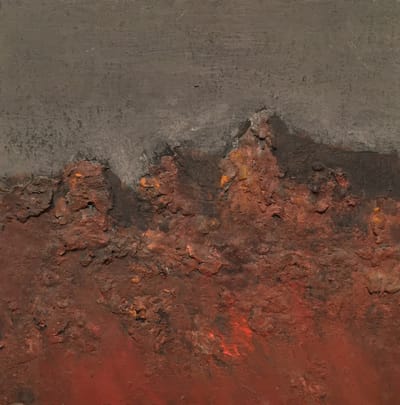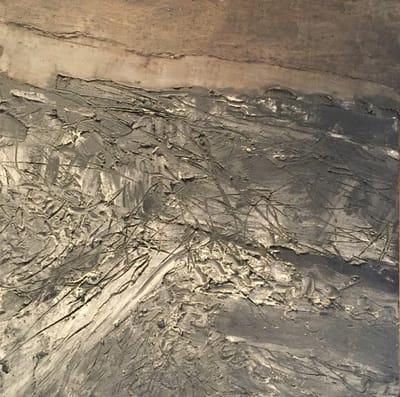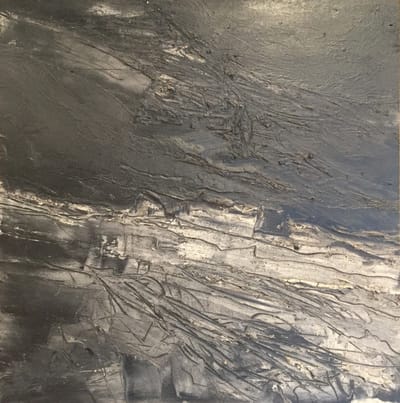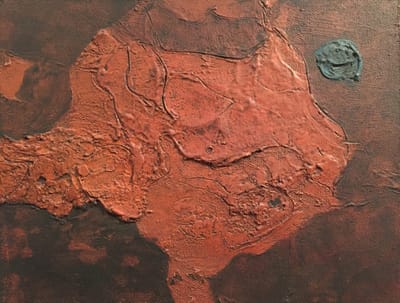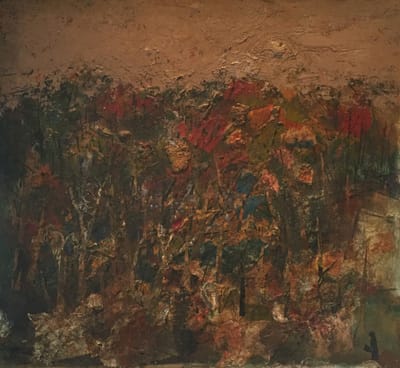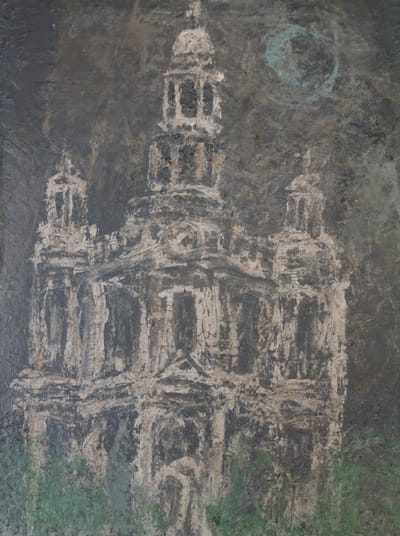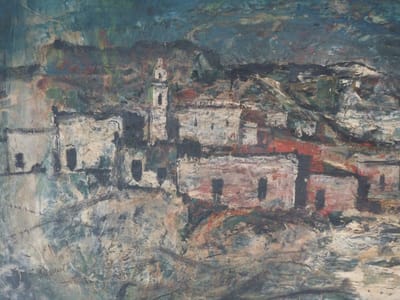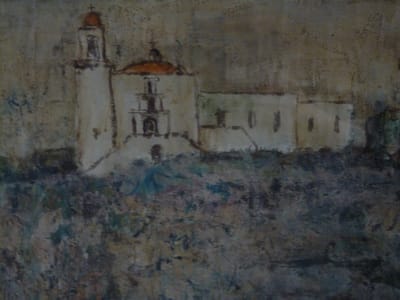Louis Bassi Siegriest (1899-1989)
Louis’ abstract mixed media work imbued with reference to his travels to the Nevada desert, Spain, and Mexico and to America’s fascination with the lunar mission and space exploration. He used sand, gypsum, and asphalt to create dimensionality and to make his paintings look as much like fragments of the terrain as images of it.
Louis belonged to the Oakland-based Society of Six artists including Selden Gile, August Gay, Maurice Logan, Bernard von Eichman, and William Clapp. The group favored the style of French fauvism and the vibrant palette of modern European and American artists shown at the 1915 Panama-Pacific International Exposition in San Francisco, instead of the tonalism, which dominated California art that period. Louis’ post-impressionist plein air group pioneered modern art in Northern California in the 1920s. He moved on to abstract painting in his middle years but seldom departed from the possibilities presented by the western landscape. The Oakland Museum honored Louis with a retrospective exhibition in 1972. His works are in the collections of the Oakland Museum, Stanford University Museum, and the University of Nevada.
Louis’ abstract mixed media work imbued with reference to his travels to the Nevada desert, Spain, and Mexico and to America’s fascination with the lunar mission and space exploration. He used sand, gypsum, and asphalt to create dimensionality and to make his paintings look as much like fragments of the terrain as images of it.
Louis belonged to the Oakland-based Society of Six artists including Selden Gile, August Gay, Maurice Logan, Bernard von Eichman, and William Clapp. The group favored the style of French fauvism and the vibrant palette of modern European and American artists shown at the 1915 Panama-Pacific International Exposition in San Francisco, instead of the tonalism, which dominated California art that period. Louis’ post-impressionist plein air group pioneered modern art in Northern California in the 1920s. He moved on to abstract painting in his middle years but seldom departed from the possibilities presented by the western landscape. The Oakland Museum honored Louis with a retrospective exhibition in 1972. His works are in the collections of the Oakland Museum, Stanford University Museum, and the University of Nevada.
|
491 Greenwich Street San Francisco, CA 94133 [email protected]
Open By Appointment |
©2024 Telegraph Hill Gallery. All rights reserved. No part of this website may be reproduced or otherwise used without the express written consent of Telegraph Hill Gallery.

